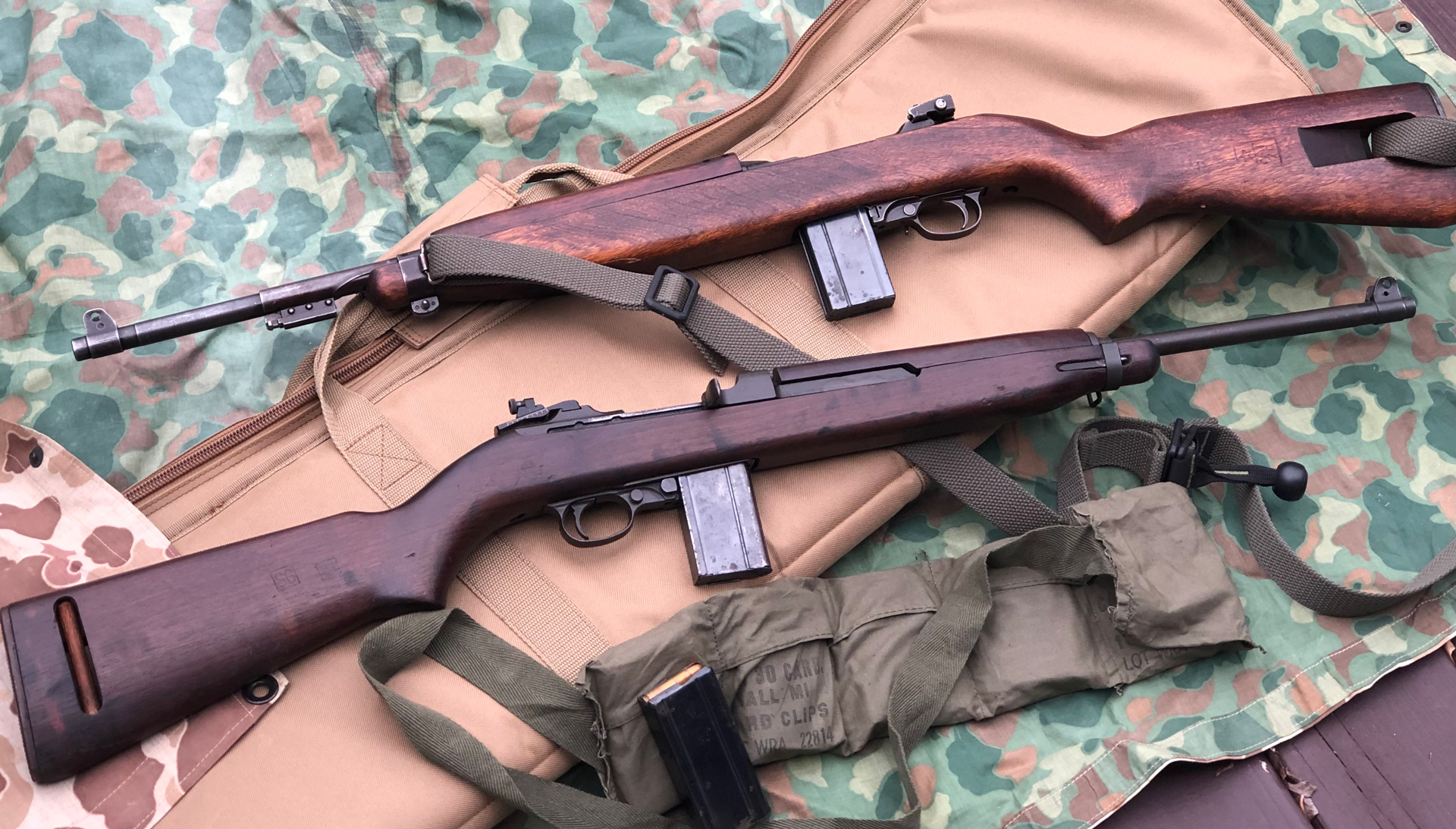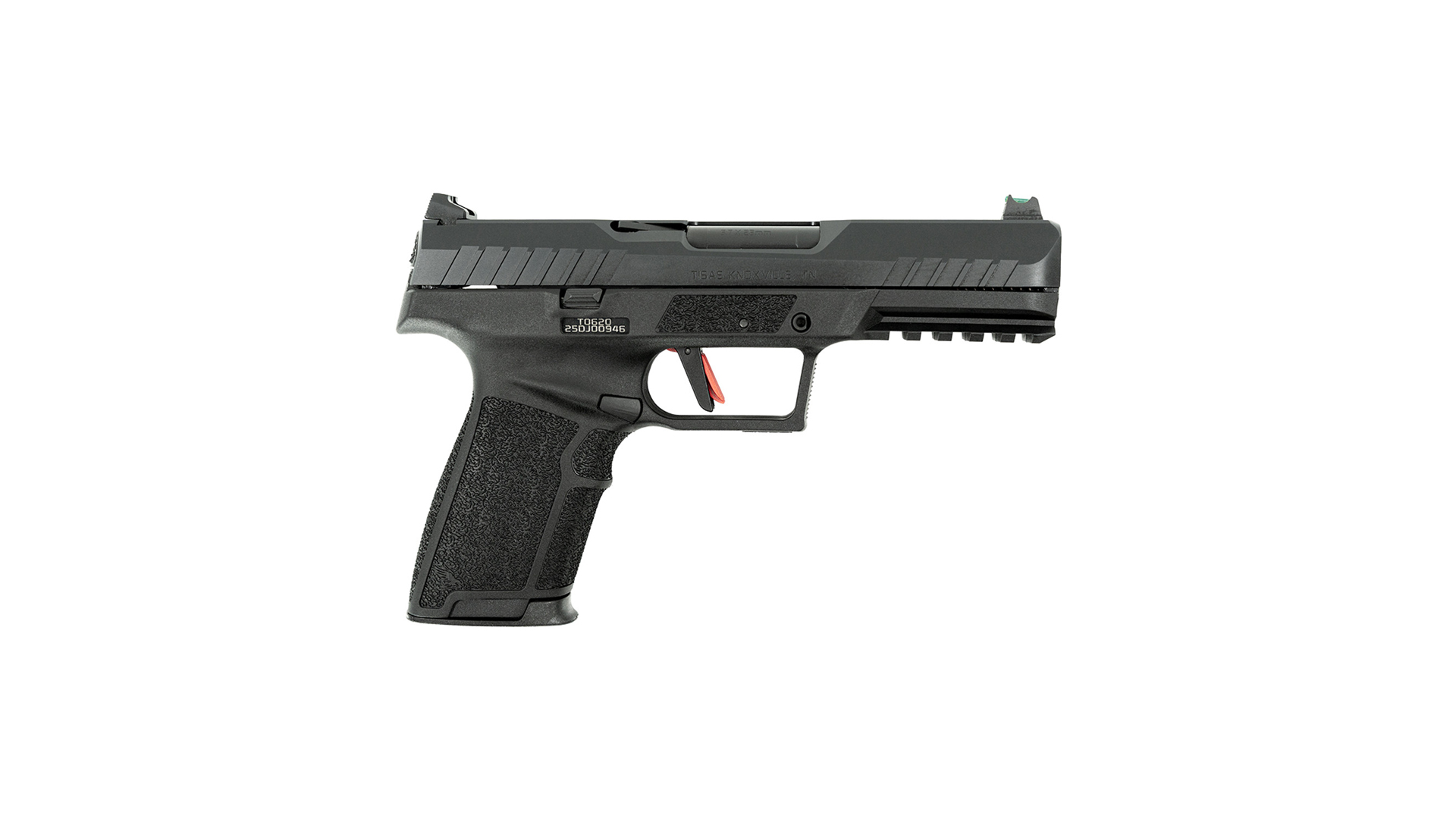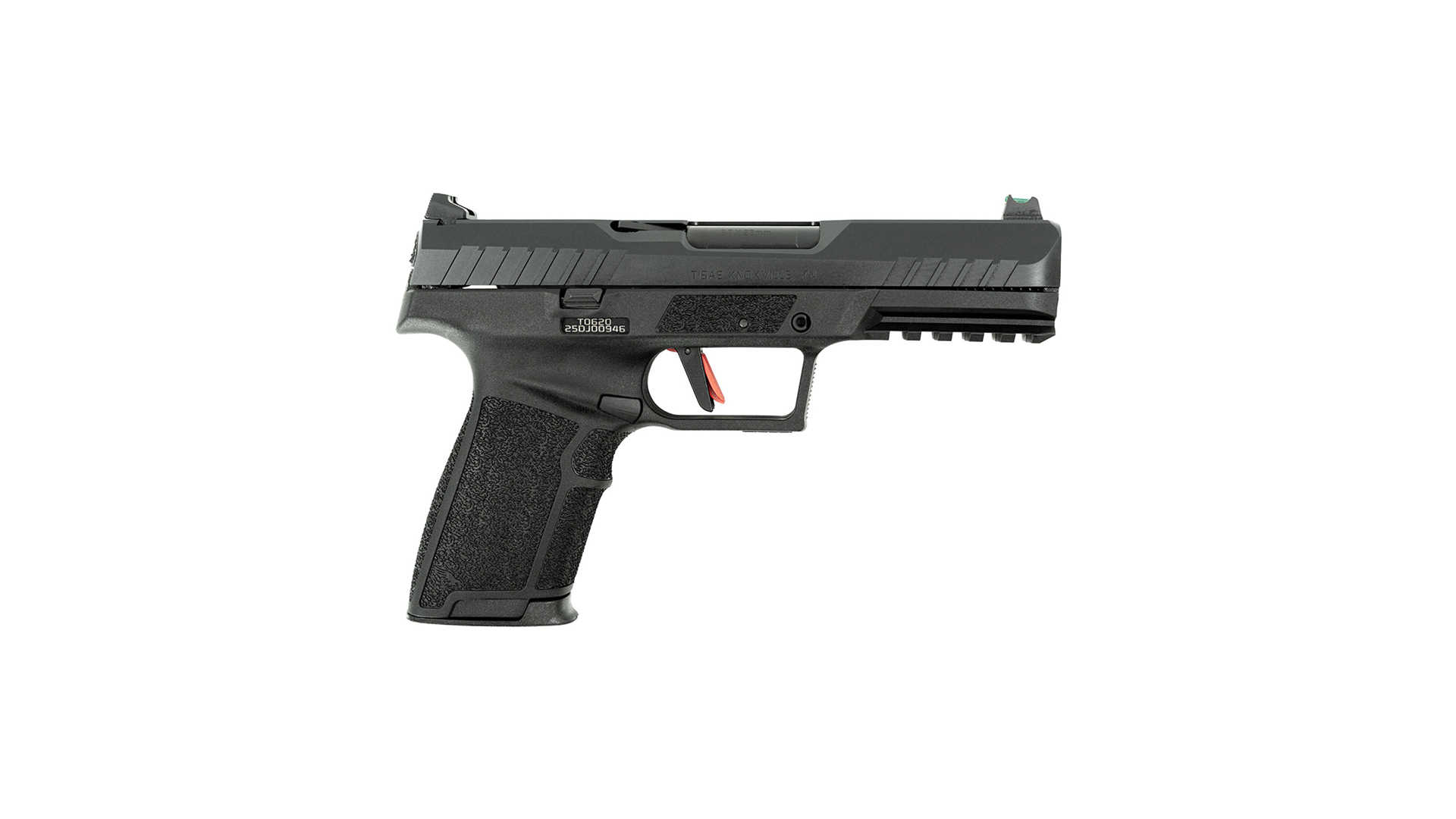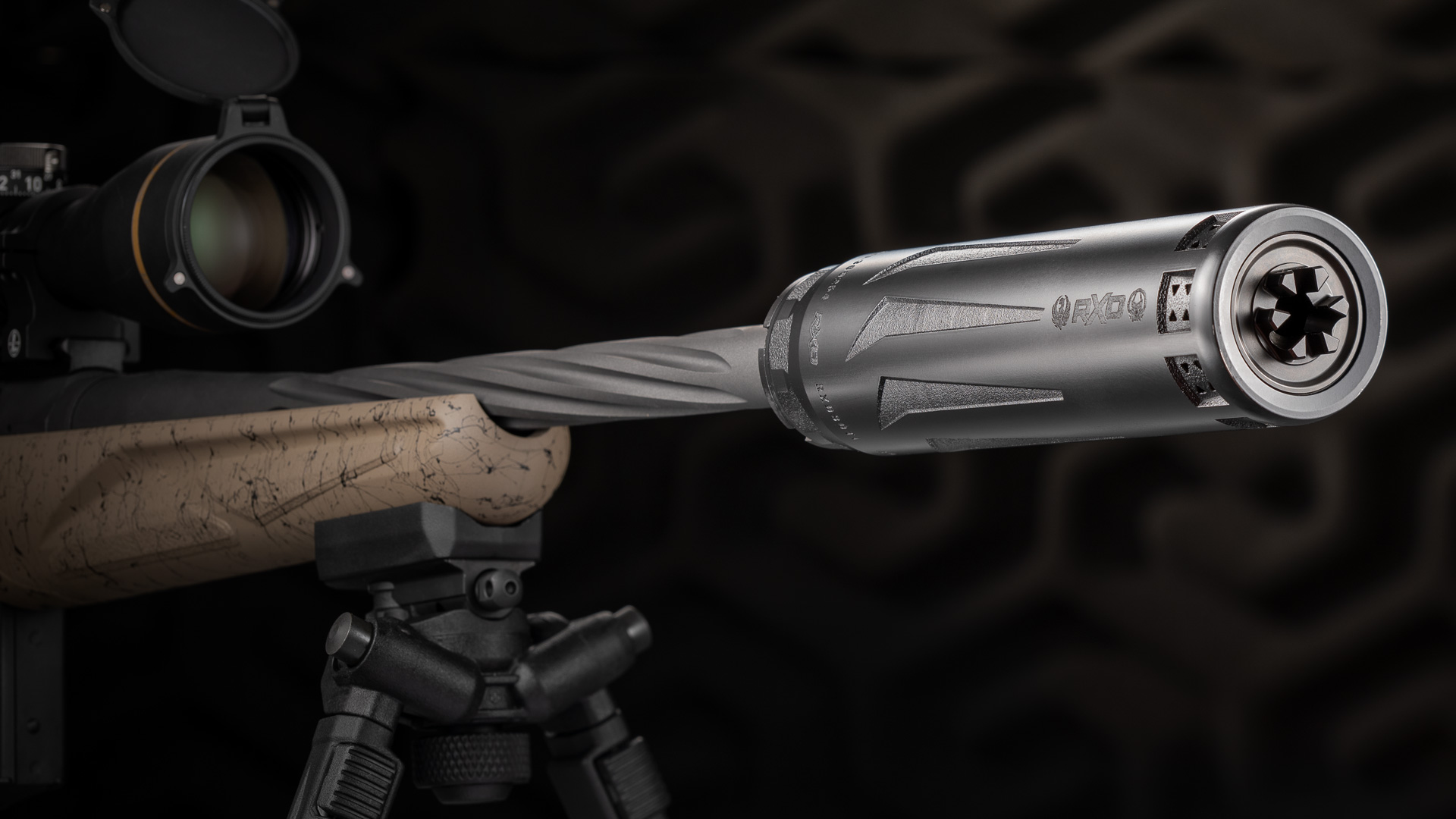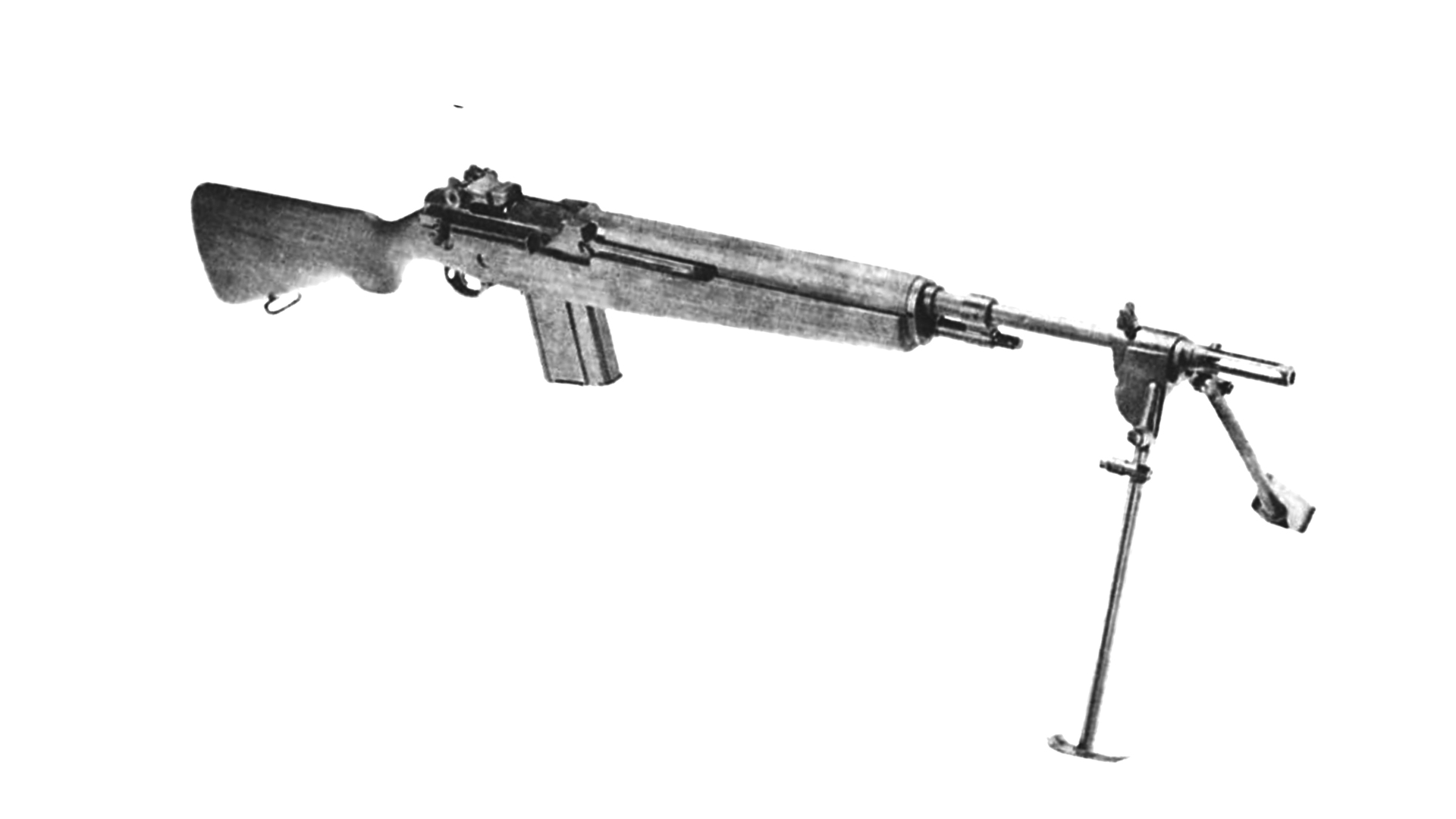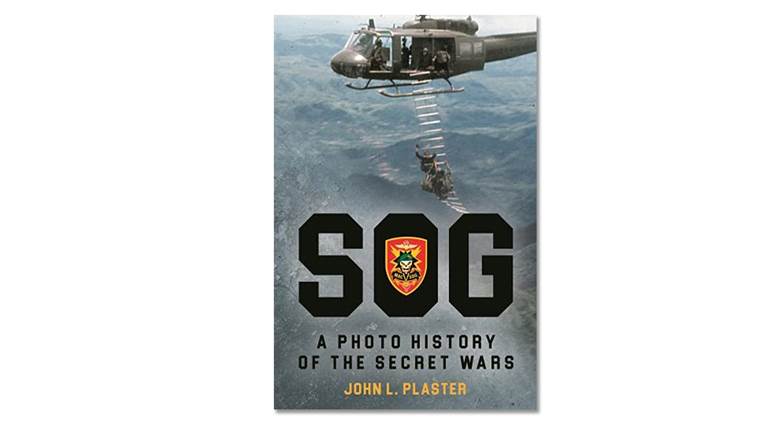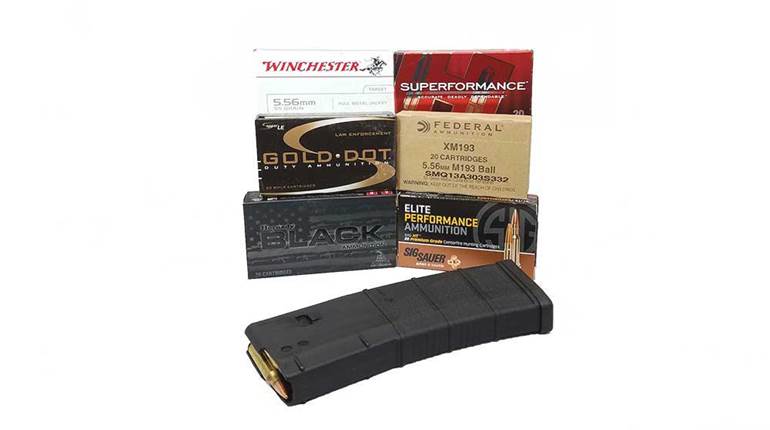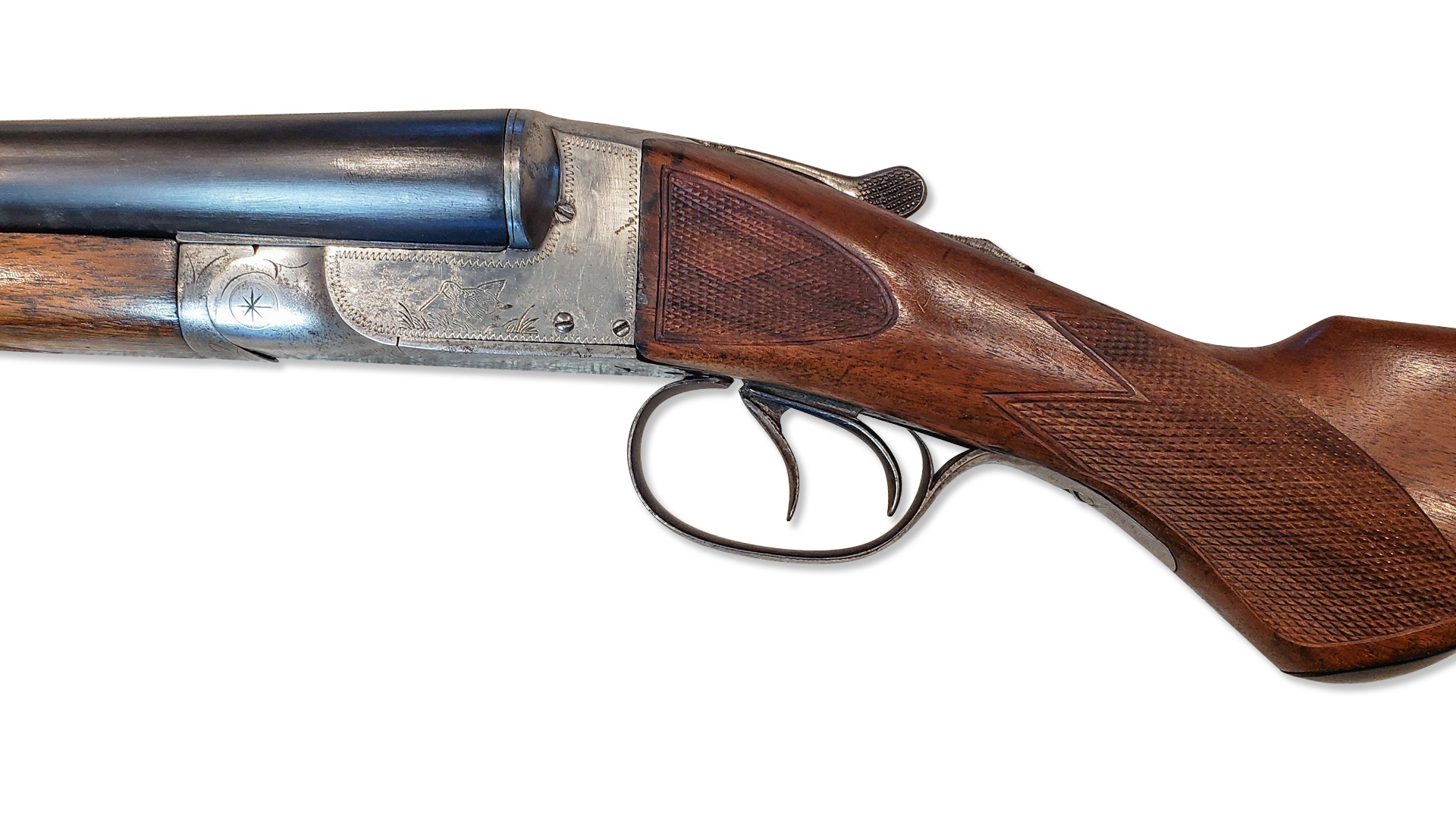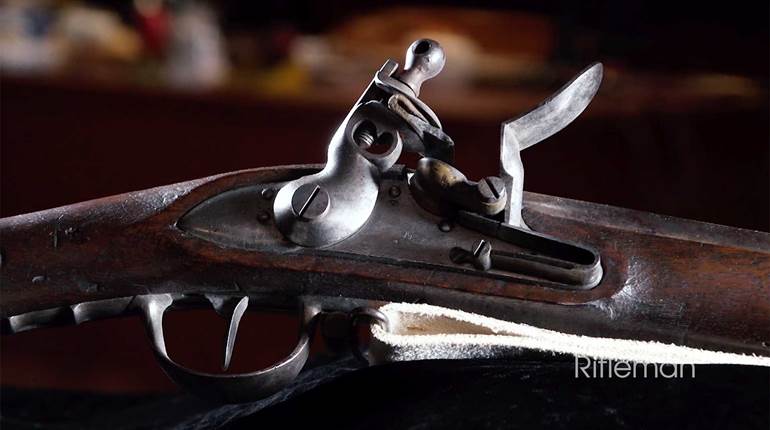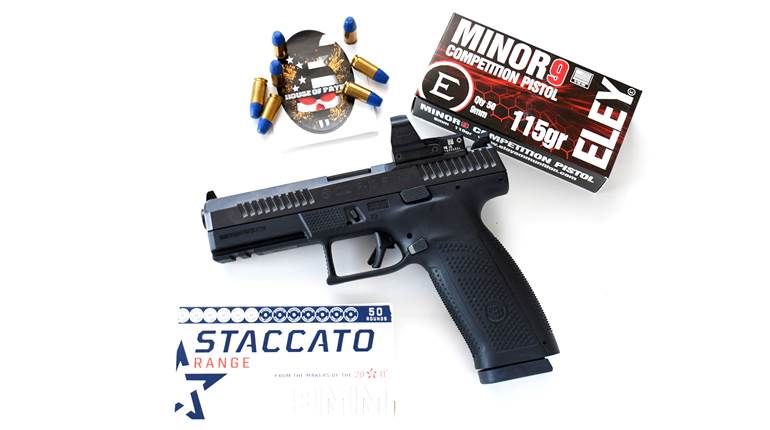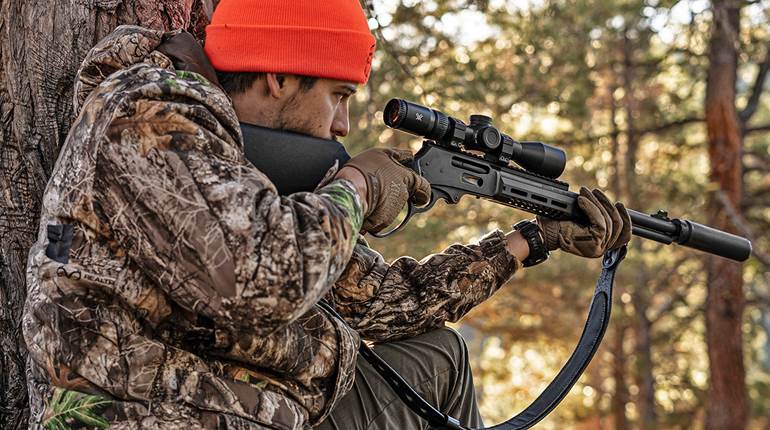
The U.S. Army replaced its green-tipped 5.56x45 mm NATO, M855 standard ball cartridge in June 2010 with the lead-free, or “green,” M855A1 cartridge. Like its predecessor, the new bullet weighs 62 grains, but since its copper core is one-third lighter than lead, it is approximately 1/8 inch longer. As such, the bullet is seated deeper (and the propellant compressed) to achieve an identical cartridge overall length of 2.248 inches.
The cartridge’s tip is bronze-colored, which is actually an anti-corrosive coating on its hardened steel penetrator. Unlike that of the M855, the M855A1’s arrowhead-shaped penetrator extends 0.275 inches beyond the front of the gilding metal jacket and, being longer, protrudes deeper inside, where a mechanical lock (i.e. cannelure) secures it. The latter is commonplace on many new non-bonded personal-protection handgun bullets.
The propellant is temperature-stabilized St. Mark’s SMP842, with additives to reduce muzzle flash and copper fouling in the bore. Its No. 41 primer is identical to the M855’s, but uses a stab crimp rather than the common circumferential crimp, apparently to better withstand the new load’s higher chamber pressure.
Zeroing, Accuracy and Twist-Rate
This cartridge has generated considerable interest because of its non-lead, “green” bullet. Sufficient M855A1 cartridges were obtained to compare performance to the previous M855 variant, and to measure any improvements, differences or deviations. The tests employed Colt, Remington and Smith & Wesson flattop ARs, having 1:7- and 1:9-inch twist rates, with both 16-inch standard and 24-inch match-grade barrels. Each rifle was topped by a high-magnification scope to allow precise aiming and target definition.
One initial U.S. Army claim, that when switching to the new round shooters were, “Not required to re-zero,” was immediately disproven. At 100 yards, there was a 3-inch zero shift with M855A1; a shooter must re-zero his rifle or carbine when transitioning from M855 to the new cartridge. The Army’s Armament Research Development and Engineering Center (ARDEC) recently modified that guidance, asserting that it, “lessens the need to re-zero the weapon.”
Accuracy cannot be assessed without addressing the rifle barrels’ twist-rates. In the early 1980s the M855’s 62-grain bullet was developed for the M249 Squad Automatic Weapon (SAW). For purposes of interoperability, the same load was adopted as the M16A2 rifle’s standard ball as well. A February 1986 U.S. Army study noted that the M855’s bullet required a “1:9 twist [which] would be more appropriate for the M16A2 rifle, improving accuracy and reliability.” Multiple studies confirmed the 1:9-inch twist requirement.
But then a problem arose. The U.S. military’s standard M856 5.56 mm tracer round was longer, heavier (63.7 grains) and slower than the M855 ball, and simply would not stabilize with a 1:9-inch twist barrel. Thus, despite it doubling M855 group sizes, the M16A2 (and later, the M4) specified a 1:7-inch rate-of-twist barrel to stabilize the tracer round. It remains so to this day. Therefore, M855A1 was test-fired with both 1:7- and 1:9-inch twist barrels, and it was verified that this new cartridge is consistently more accurate in the latter barrels-as was its predecessor.
The M855A1’s developers have described it as yielding “match-like” accuracy, which most rifle shooters would define as one minute-of-angle (m.o.a.), or groups measuring no more than 1 inch at 100 yards. While the new ammunition has proved more accurate than the green-tipped load it replaced, testing did not yield match-like accuracy, especially in the standard 1:7-inch twist-rate found in today’s M4s and M16s. At 100 yards, the best group with a 1:7-inch barrel was 1.62 inches (1.6 m.o.a.). At 300 yards. it similarly fired 1.6 m.o.a. (4.9 inches) and widened to 1.8 m.o.a. (7.5 inches) at 400 yards. At these same distances, firing the M855A1 through a 1:9-inch twist barrel reduced group sizes by approximately half.
On average, the new ammunition produced one flyer in roughly each five rounds, which, it can be argued, exaggerated the group sizes. Since the Army announced that, “On average, 95 percent of the [M855A1] rounds will hit an 8x8-inch target at 600 meters,” each group’s most errant bullet impact was discarded and group sizes recalculated. Statistically they improved, but not enough to place 95 percent of rounds so close at 600 meters, at least when using the standard 1:7-inch barrel-which may explain why accuracy was less than expected.
When U.S. Army shooters twice fired public demonstrations of the new round, they did not employ standard 1:7-inch twist M16A2s or M4s, but accurized, match-grade, stainless-barreled rifles from the Army Marksmanship Unit (AMU). I contacted the AMU and learned that these rifles did not have standard-issue 1:7-inch barrels, but most likely 1:8-inch twist, which probably accounts for their “match-like” accuracy.
Further analyzing the new cartridge, 10 bullets were pulled to measure their weight. Seven bullets weighed within 0.2 grain of 62 grains-a tolerance worthy of match-grade projectiles-while the average for all 10 was an impressive 61.99 grains. However, while using an impact puller there was a great variation in the number of blows required to release a bullet; some popped out with only four strikes while others required more than 40. This was most likely attributed to an inconsistent application of the bullet’s waterproof seal, inducing unbalanced separation of the bullet from the cartridge mouth. This could well account for the flyers experienced.
bullets weighed within 0.2 grain of 62 grains-a tolerance worthy of match-grade projectiles-while the average for all 10 was an impressive 61.99 grains. However, while using an impact puller there was a great variation in the number of blows required to release a bullet; some popped out with only four strikes while others required more than 40. This was most likely attributed to an inconsistent application of the bullet’s waterproof seal, inducing unbalanced separation of the bullet from the cartridge mouth. This could well account for the flyers experienced.
Interestingly, while inspecting the M855A1 cartridges, it was noted that 18 percent of the exposed penetrators rotated with finger-pressure. However, testing those cartridges separately, they proved to be no less accurate than the others.
Overall, it was found that M855A1 is more accurate than the old green-tip, but capable of even better accuracy when fired from a 1:9-inch twist barrel.
Lethality
Recent combat experiences identified the green-tipped M855’s tendency to occasionally “ice-pick”-that is, poke completely through enemy personnel without neutralizing them-even with multiple hits, especially during close-range gunfights. Sometimes it performed well; sometimes it did not.
Army researchers found that lethality was dictated by the 5.56 mm bullet’s yaw; that is, after impact a hardened ball projectile must wobble or turn against its axis-yaw-or fragment, to inflict significant tissue damage. “At a low angle of yaw,” an Army study determined, “the bullet reacts more slowly, causing the inconsistent effects observed in the field … . [T]he location and amount of yaw depend upon the speed of the bullet at impact, angle of impact, and density of tissue.”
A related factor was the physiology of Afghan Taliban and Iraqi insurgents. Usually malnourished, their torsos are only about 7.5-inches thick, while the older M855 projectile often penetrated, “up to 7 inches before beginning to yaw, and will already have exited the body before yaw or fragmentation occur.” According to published standards, the new cartridge is designed to yaw no more than 3 inches beyond the impact point, producing a temporary cavity diameter of 4 to 6 inches and minimum penetration depth of 12 inches, and to do that consistently.
To test those standards, the Black Hills Ammunition ballistics lab assisted me by test-firing the M855A1 into ballistic gelatin. In particular, I was interested in the bullet’s performance at close-quarters so it was fired at 12 feet, a distance at which the old round sometimes failed. The results were impressive. In less than 1inch the lead-free bullet yawed, immediately opening a 4.5-inch wide temporary cavity, which extended for 14.5 inches-exactly as claimed. That would certainly be effective against the thin-torsoed insurgents operating in the Mideast and Southwest Asia.
Barrier Penetration
This is where the M855A1 excels. Unlike the older bullet, the M855A1’s penetrator is exposed, with a sharper tip, and it weighs 19 grains, nearly twice the weight of the M855’s penetrator. And the new bullet is also pushed at a higher velocity.
Fired from the M4’s 14.5-inch barrel, the penetrator can pierce 3/8 inches hardened steel at 350 meters, “based on the range at which 50 percent of the rounds will pass through the barrier.” That’s more than twice as far as the earlier green-tipped cartridge’s bullet and that distance is extended even farther when it is fired from the M16A2’s 20-inch barrel. To test those claims, both were first fired into a hardened, 3/8-inch steel plate at 100 yards; the old M855’s penetrator did not penetrate, leaving only a silver crater. The new bronze-tipped penetrator punched completely through. Next, the green-tip and bronze-tip bullets were fired at 3/8-inch soft steel at 300 yards. Again, the new bullet punched cleanly through, while the green-tipped M855 merely left a surface smear.
According to the Army, the new bullet also penetrates concrete blocks at 90 yards when fired from an M16A2’s 20-inch barrel, and at 40 yards when fired from an M4’s shorter barrel. A single green-tip projectile could not breach a concrete block at any distance.
Because there were reported instances in Iraq of the older bullet failing to penetrate car doors or inflict serious wounds when fired into windshields, the new bullet was also tested according to FBI criteria against those prescribed barriers, including sheet steel and automobile glass. Not only did the M855A1 breach them, but it continued on into ballistic gelatin with sufficient weight and velocity to have inflicted serious or lethal wounds.
One unforeseen consequence of such excellent barrier penetration: Army sources tell me the M855A1 is chewing up expensive target stands, while its steel penetrator sometimes ricochets beyond established impact areas. Those issues are now being studied.
Matching The M855’s Trajectory
During the past decade the U.S. Army and Marine Corps has purchased thousands of  optical sights-especially ACOGs-that incorporate holdover lines calibrated to the old M855 bullet’s trajectory. Having invested millions of dollars in the advanced sights, the M855A1 was intended to be a “ballistic match” to the previous cartridge to preclude expensive sight modifications.
optical sights-especially ACOGs-that incorporate holdover lines calibrated to the old M855 bullet’s trajectory. Having invested millions of dollars in the advanced sights, the M855A1 was intended to be a “ballistic match” to the previous cartridge to preclude expensive sight modifications.
Since the new bullet is longer and faster with a sharper tip and higher ballistic coefficient, one could expect to find some trajectory variance. Instead of relying on computer-generated trajectory graphs, the M855’s drop was live-fire tested against that of the M855A1 through a 1:7-inch twist barrel.
Beginning with a 100-yard zero, five-round groups of each cartridge were fired at 200, 300 and 400 yards, and then measured bullet drop from center-group to center-group. At 200 yards, the groups printed atop each other-a true trajectory match. At 300 yards, the faster new round’s group printed 6 inches higher than the old green-tip, which I consider to be a significant variance. At 400 yards, the groups began to converge, with the new ammunition impacting 4.5-inches high.
How acceptable are these variances? That depends on how precisely a combat soldier is expected to shoot at medium-range.
Propellant, Chamber Pressure, Barrel Length and Muzzle Velocity
The new M855A1 contains St. Mark’s SMP842 propellant, which has been temperature-stabilized to minimize the effects of heat and cold on burning rates. Also, a bore de-coppering agent was added to mitigate the effects of jacket fouling from the new projectile. Yet another additive reduces muzzle flash, which is helpful when the new cartridge is fired from short-barreled M4s.
Muzzle velocity was boosted to improve lethality, especially at close range when fired from M4 carbines. Thus, at 120 meters the M4’s 14.5-inch barrel still yields 2476 f.p.s. velocity; and even from the SEAL 10-inch barreled M4 it attains 2214 f.p.s. The downside of the new propellant formulation is, unfortunately, a commensurate increase in chamber pressure, which eventually will affect a rifle’s performance.
In 1984, the USMC conducted a test comparing the Vietnam-era, 55-grain, M193 round to the then-new 62-grain, green-tipped M855, which had boosted chamber pressure from 50,000 p.s.i. to 53,000 p.s.i. Side-by-side, 6,000 rounds each were fired through M16A1s and M16A2s with the green-tip’s hotter load. While the M16A1s saw virtually no accuracy decline, the M16A2s saw their groups more than double in size-the sole variable was chamber pressure. And the new cartridge generates even greater pressure, perhaps 3,000 to 5,000 p.s.i.
For gas port pressure, the M855A1 generates 50 percent higher pressure (23,767 p.s.i.)  on the Special Ops 11.5-inch M4 barrel, compared to the 16,067 p.s.i. with the M16A2’s 20-inch barrel. That has been shown to cause port erosion, which boosts the automatic-fire rate, increasing the likelihood of jams. In the 2011 tests of new Army carbine prototypes, the barrels experienced “accelerated bolt wear” from firing the M855A1, because of higher chamber pressure and increased bore temperatures. A Special Operations Command test saw cracks appear on locking lugs and bolts at the cam pin holes on average at 6,000 rounds, but with as few as 3,000 rounds of “intense” full-automatic firing. The solution may be to find a means to count the number of rounds a rifle has fired.
on the Special Ops 11.5-inch M4 barrel, compared to the 16,067 p.s.i. with the M16A2’s 20-inch barrel. That has been shown to cause port erosion, which boosts the automatic-fire rate, increasing the likelihood of jams. In the 2011 tests of new Army carbine prototypes, the barrels experienced “accelerated bolt wear” from firing the M855A1, because of higher chamber pressure and increased bore temperatures. A Special Operations Command test saw cracks appear on locking lugs and bolts at the cam pin holes on average at 6,000 rounds, but with as few as 3,000 rounds of “intense” full-automatic firing. The solution may be to find a means to count the number of rounds a rifle has fired.
Summary
Despite some shortcomings, the M855A1 is probably the world’s best 5.56 mm ball ammunition and a significant improvement over the green-tipped M855 cartridge. The M855A1 enhances the M4’s and M16A2’s lethality, boosts barrier penetration, and is more accurate than the old M855. Its lead-free composition breaks new ground for American military ammunition; however, it does not increase the 5.56 mm’s effective range. Only a totally new cartridge can accomplish that.
Why the Controversy?
Whenever the U.S. Army adopts a new rifle or cartridge it generates controversy, which was as true in the days of John Garand’s M1 and Colt’s 5.56 mm AR-15 as it is today. The Army’s recent fielding of a lead-free 5.56 mm standard ball cartridge is no exception, but it was exacerbated by how the new cartridge was promoted during development.
Various Army institutions initially emphasized the bullet’s environmental impact with no stated goal of improving the 5.56 mm’s performance. This program aspired solely, “to annually eliminate 2000 metric tons of hazardous material,” and that, alone. Army reports abound with terms such as “environmentally friendly,” and, “the Army’s commitment to environmental stewardship.” The M855A1’s development was even called a “moral obligation” in the Army’s 2010 Life Cycle Environmental Assessment.
Accuracy was not an issue until well into the cartridge’s final development. Despite America’s military forces being seven years into war, a 2008 PowerPoint briefing listed the M855A1’s first consideration as “Environmental Compliance,” while “Accuracy” merely followed. And then, when the new M855A1’s accuracy specifications were published, they were the same as the old M855 it replaced-a “standard deviation of 6.8 inches at 600 yards”-meaning at least half the bullets must impact within 6.8 inches of the point-of-aim. That was quite at odds with, “match-like accuracy.”
A civilian Army Marksmanship Unit (AMU) shooter demonstrated the M855A1’s accuracy at the NRA’s 2012 Camp Perry National Matches. He did not fire a standard M4 or M16A2 with a 1:7-inch twist barrel, however, but instead shot a match-grade rifle with a stainless barrel and a more accurate 1:8-inch twist. Thus, the demonstration proved nothing. Likewise, another Army demonstration pitted the old M855 fired by a standard M4 Carbine against the new M855A1 fired by an AMU match-grade rifle, and again, any results were skewed by different barrel-twist rates.
As late as 2005, the developers’ goal was to “at least match” the M855’s performance, which was already considered deficient due to well documented inadequacies in Iraq and Afghanistan. And then, when the new bullet’s ballistic gelatin tests were completed, the Army classified the results. “What’s so secret?” a firearm industry expert asked me. “It’s just ball ammunition.” One Army officer wrote that the classification was, “so the process does not lend itself to adoption by commercial entities.” However, a Picatinny Arsenal representative told me it was classified, “to preserve our technological advantages over our potential adversaries.”
Performance assertions were skewed, too. While developers hailed the new bullet as “vastly better” at penetrating steel than the 7.62 mm, M80 ball round, this was an apples-to-oranges comparison. The M855A1 has a steel penetrator-it should penetrate better than a 7.62 mm ball round, which contains a lead-alloy core. Similarly, it was misleading for the Army Research Laboratory to have tested the round, “against 24 layers of Kevlar fabric out to 1,000 meters.” That thickness of Kevlar is only rated to protect its wearers against handgun ammunition-not rifle ammunition-and especially not a rifle round with a steel penetrator. Such a claim was both irrelevant and disingenuous.
Despite all the “spin”-as testing revealed-the M855A1 is more accurate, more lethal and offers better barrier penetration than its predecessor. That’s what’s important to the soldiers and Marines whose lives are on the line. There was no need to exaggerate.






